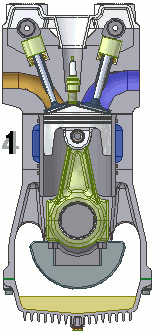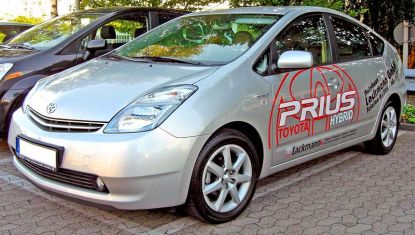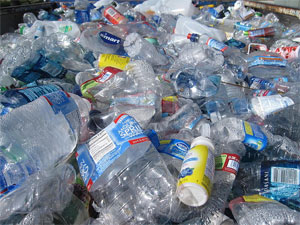Unbeknownst to many, the familiar diesel engine has potential for the implementation of clean diesel technology for use in the same way that hybrids are used today. From development and historical use of the diesel engine to the engineering principles by which the engine functions, diesel technology has evolved to meet the needs of a changing society. Today, in competition with hybrid engines, technological development of diesel engine is being explored in hopes in meet the needs of consumers in accordance with new regulations designed to protect the environment. In looking to the future, the improvement and expanded use of diesel-powered engines offer an innovative path towards a more sustainable world.
Demystifying Diesel
Recently, consumers have become more aware of the impact they have on the environment. Gone are the days of wastefulness without consciousness. In every store and with every purchase, consumers are reminded to “be green”. This green initiative is a global effort to combat the negative effects that the human lifestyle has on the global environment. Being green may refer to recycling papers and plastic, using earth-friendly products that don’t harm the environment, or driving cars with high gas mileage and low emissions. For decades the aim of the auto industry was to build bigger, more powerful cars to fulfill the demand of consumers. These cars, with big engines, low gas mileage, and high emissions, left a visible impact on the environment. Today consumer demand has shifted towards smaller, more fuel-efficient cars that have low emissions. The market has responded with hybrid cars, introducing a new competitor into the consumer market. One seemingly forgotten technology that can offer consumers everything hybrids can and possibly more is employed in diesel-powered cars. Diesel engines have long been touted as being too large, loud, and inefficient and have become infamous for the plume of soot and smoke that shoots out of the tailpipe upon starting. However, with new technology being developed in Europe, diesel engines are quickly becoming known for their new clean and more dependable nature. The fact that diesel-powered cars are sometimes cheaper than their gas or even hybrid counterparts may even be the best part about them and also the key to making the green movement a true global initiative.
Development of the Diesel Engine
In 1897, German engineer Rudolf Diesel developed the first working diesel engine. A year later Diesel was granted a patent and began manufacturing his engine in partnership with other companies. At first, the diesel engine was used mainly for boats and submarines. Since the diesel engine was more efficient than the gasoline engines of the time, it was the perfect substitute in various types of machinery. In 1922 the first vehicle, an agricultural tractor, was powered by a diesel engine built by Mercedes-Benz. A year later, trucks with diesel engines were built and the engine became a popular power-plant for automobiles [1]. Diesel engines provide a lot more power than their gas counterparts, so diesel-powered trucks became the automobile of choice to transport merchandise across the country. Due to this power advantage as well as the lower fuel consumption that diesel engines exhibited over gasoline engines, interest grew in the private market, and automobiles were built utilizing diesel technology. Diesel-powered cars and trucks became popular in Europe; however, they did not see the same success in the United States where diesel-powered vehicles were mostly only used for transportation of goods.
The economic growth experienced by many of the industrialized nations in the world after World War II was aided by the ability to transport merchandise cross-country relatively cheaply and efficiently. This, however, was done at the expense of the environment. Diesel engines were notorious for putting out a lot of smog and smoke and were considered the most pollutant automobile on the road. They were also extremely loud and on start-up were known to be clanky, which irritated motorists. In the early 2000’s new, stricter environmental regulations effectively caused all diesel engine car imports to the United States to fall to zero. This spurred many companies, such as Bosch and Mercedes-Benz, into action to create new clean diesel technology [2].
How It Works
The diesel engine is an internal combustion engine; combustion is taking place inside an enclosed cylinder. It’s a four-stroke engine, exactly like gasoline engines. The basic principles of how a diesel engine works are illustrated in Fig. 1.
A four stroke engine can be described in four separate steps or strokes. The first stroke is the intake stroke, which opens up the engine valves and allows air to enter the cylinder. The second stroke is the compression stroke, which moves the piston up inside the cylinder as the valves close and compresses the air. The combustion stroke is the third stroke. In this step fuel is injected into the top of the cylinder when the piston is near the top. Because the air in the cylinder is compressed, it becomes heated and this causes the diesel fuel to spontaneously combust and cause an explosion. During the fourth stroke of the cycle, the piston moves back down and clears the chamber of the exhaust through an exhaust valve [3].
This is a continuous, repetitive process that occurs thousands of times a minute. It is important to note that unlike a gasoline engine, there is no spark required for an explosion to take place inside the cylinder. In a gasoline powered engine, combustion is achieved by the spark plug igniting the fuel and air mixture in the cylinder. Diesel engines achieve the explosion purely through the heat caused by high pressure inside the cylinder. The fuel is also injected into the cylinder at high pressure. A high injection pressure leads to fine fuel mist entering the cylinder, which causes a more powerful explosion and a more complete burning of the fuel aggregates. The black smoke and soot that comes out of the exhaust pipe of diesel engines can be attributed to low injection pressure and an inefficient diesel engine.
Clean Diesel Technology
The development of clean diesel is actually a composite of three different evolved aspects working together to make diesel engines greener and more efficient; to achieve these goals, engineers have utilized clean fuels, cleaner engines, and emission controls.
Fuels
Clean fuel is the sole aspect that isn’t completely controlled by the automotive industry. While it’s true that researchers and engineers who work in fuel industries develop cleaner fuel options, in the end it is a governmental decision to implement regulations that require the importation and use of cleaner fuels and banning fuels which cause harmful emissions. Ultra Low Sulfur Diesel (ULSD) began arriving in the United States in 2006 [4]. The new cleaner diesel fuel has 15 parts per million of sulfur whereas its predecessor had 500 parts per million of sulfur content. ULSD allows for a reduction in sulfur emissions as well as the implementation of other emission controls that would not be possible with a high sulfur concentration [5].
Engines
Cleaner diesel engines incorporate high pressure fuel injectors and stronger materials in the engine block to make the engine more efficient. The fuel injectors spray the fuel into the cylinder to cause an explosion and move the pistons. Because there is no spark to ignite the fuel, fine fuel particulates must be introduced into the cylinder, which ignite because of the high pressure [6]. Currently the newest fuel injectors being developed inject fuel into the cylinder at around 35,000 psi; the higher the injection pressure into the cylinder, the finer the fuel mist that is injected into the cylinder. This means that more fuel is burned inside the cylinder and less is expelled as exhaust, which would raise the emissions of the engine.
The new materials and forging processes available to engineers today also allow for the construction of cleaner, more efficient engines. New composite materials and a better understanding of the mechanics behind engines have allowed engineers to develop engines which transform more of the energy in the fuel into mechanical energy. This also allows for a reduction in the amount of energy that is lost as heat [6]. Such technology actually has benefited all types of engines, but it’s more noticeable on diesel engines for which technology hasn’t changed drastically since it was created.
Exhaust Control
Post-combustion filters and catalytic converters also are used in the exhaust pipe to trap particulate matter that escapes from the cylinder. The NOx and particulate matter emissions can be brought down to near the level of hybrid cars with a combination of fine filters and catalytic converter technologies. Currently, new catalytic converters are being developed that contain urea, which reacts with NOx particulates and renders them harmless, another potential future improvement in exhaust control.
Idle Reduction Technology
Another new implementation that makes diesel engines more efficient is related to not to technical engine function, but to the operation of the engine. Idle reduction technology, as the name implies, has been introduced to reduce the time engines are left idling. An idling engine burns fuel and raises emissions [5]. For example, in the United States, most goods are transported by diesel powered trucks. The trucks are allowed to be on the road for a certain number of hours after which they are required to stop and the driver must rest. During this rest period the driver allows the engine to idle in order to have electrical power, heating, and cooling. This idling of the engine is not only wasteful, but also harmful to the environment. As a result, new electrified parking spaces, which are an example of idling reduction technology, have been introduced where trucks can be parked and truck drivers can receive the same amenities an idling truck provides from an outside system. This not only reduces emissions but also increases the distance a truck can travel on one tank of gas, resulting in less fuel consumption [7].
Diesel versus Hybrid
A few years ago, when buying a new car, most people were concerned about the amenities, the horsepower, and the price. Now, with the new green movement and high gas prices that likely will continue to rise, fuel efficiency has become consumers’ number one priority. Hybrid cars have become the most popular option and are touted as the greenest automobiles available on the market today. A hybrid vehicle’s most alluring characteristics are the ultra-low emissions and high gas mileage. The most popular hybrid is the Toyota Prius, which gets an EPA estimated 55 miles-per-gallon, though it is important to note that this value was determined in ideal conditions. Ideal conditions are described as flat, smooth, paved roads which a driver would rarely encounter on their daily commute. A recent Consumer Reports article finds fault in the testing standards set by the EPA and claims that the actually miles-per-gallon rating for the Prius is 32, a reduction of 42% [8]. On the other hand a Volkswagen Polo, a small turbo diesel car currently only available in Europe, can achieve a claimed 70 miles-per-gallon. Even if this number was reduced by 42% percent to 41 miles-per-gallon, it is still more fuel-efficient than the Prius.
With the new clean diesel technology, emissions from hybrid and diesel powered cars are also comparable (see Fig. 2). A combination of catalytic converters as well as new filter technology captures nearly all of the particulates and allows for virtually zero emissions. There are new cars using the clean diesel technology, which are branded as Ultra Low Emissions Vehicles by the United States government. It is important to note that both are more fuel efficient and have lower emissions than most gasoline powered cars. Power output is also important when comparing diesel and hybrid engines. The Prius, with its gas-electric engine, produces 134 horsepower and 105 pounds-feet of torque [9]. The new 2009 Volkswagen Jetta, on the other hand, produces 140 horsepower and 236 pounds-feet of torque [7]. This power difference is very noticeable by the driver and in fact makes the Jetta much quicker than the Prius, which has 131 less pounds-feet of torque to work with.
Fueling the Future
Diesel engines have been around for more than a century, but only now are we realizing their true potential. The diesel engine is no longer viewed as nothing more than a loud and polluting nuisance. With modern technology, the diesel engine has transformed into an efficient power source that can still be used in a time where we, as humans, have become more aware of the negative impact our behaviors are having on the environment. All of the technology being implemented in clean diesel engines is also relatively cheap. While diesel cars are more expensive than their gasoline-powered counterparts, they are cheaper than hybrid-powered vehicles. It is also feasible that a consumer will save enough money, through the improved gas mileage, to actually pay off the difference between a diesel-powered car and a gasoline-powered car. Also since diesel fuel and gasoline are relatively the same price, there will be no added cost to owning a diesel powered car over a hybrid car that can be attributed to fuel cost. With developing technology becoming greener and cleaner, diesel engine vehicles prove to be an economical choice.





